News
EFFECTS OF INCREASED CO2 ON WOODY PLANT PESTS
Insect pests have greatly vexed earth's trees and shrubs in the past; and they may continue to do so in the future. But the question arises: Will the anticipated increase in the atmosphere's CO2 content exacerbate, ameliorate or have no effect on this phenomenon? In the paragraphs below, the results of several studies that address this important question are described and discussed, as they pertain to woody plants other than oak and maple trees, which are addressed separately in similar reports.
Docherty et al. (1997) grew beech and sycamore saplings in glasshouses maintained at atmospheric CO2 concentrations of 350 and 600 ppm, while groups of three sap-feeding aphid species and two sap-feeding leafhopper species were allowed to feed on them. Overall, they reported that elevated CO2 had few significant effects on the performance of the insects, although there was a non-significant tendency for elevated CO2 to reduce the individual weights and populations sizes of the aphids.
One year later, in a study that did not involve herbivores, Gleadow et al. (1998 ) grew eucalyptus seedlings in glasshouses maintained at 400 and 800 ppm CO2 for a period of six months, observing biomass increases of 98% and 134% in high and low nitrogen treatments, respectively. They also studied a sugar-based compound called prunasin, which produces cyanide in response to tissue damage caused by foraging herbivores. And although elevated CO2 caused no significant change in leaf prunasin content, it was determined that the proportion of nitrogen allocated to prunasin increased by approximately 20% in the CO2enriched saplings, suggestive of a potential for increased prunasin production had the eucalyptus saplings been under attack by herbivores.
Simultaneously, in a study of simulated herbivory, Kruger et al. (1998) grew seedlings of oneyear-old maple (Acer saccharum) and two-year-old aspen (Populus tremuloides) trees in glasshouses with atmospheric CO2 concentrations of 356 and 645 ppm for 70 days. At the 49day point of the experiment, half of the leaf area on half of the trees in each treatment was removed; and this defoliation caused the final dry weights of both species growing in ambient air to decline. In the CO2-enriched glasshouse, on the other hand, the defoliated maple trees ended up weighing just as much as the non-defoliated maple trees; while the defoliated aspen trees ended up weighing a little less, but not significantly less, than their non-defoliated counterparts. Hence, atmospheric CO2 enrichment helped both species to better recover from the debilitating effect of leaf removal, which suggests that these trees may be better able to deal with the physical damage that might be inflicted upon them by herbivores in a future world of higher atmospheric CO2 concentration.

More News

The Influence of CO2 on Plant Antioxidants
Center for the Study of Carbon Dioxide and Global Change. "The Influence of CO2 on Plant Antioxidants.” Last modified January 8, 2015. http://www.co2science.org/subject/a/summaries/antioxidants.php.
Released On: 1/16/2015
Views: 6497
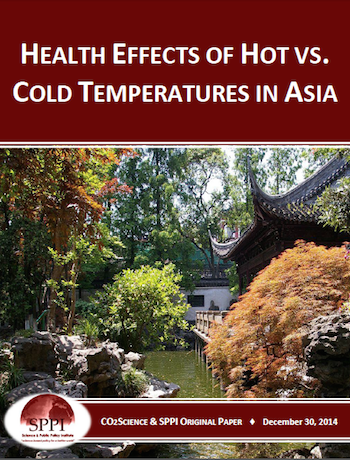
Health Effects of Hot Vs Cold Temperatures in Asia
Health Effects of Hot Vs Cold Temperatures in Asia.
Released On: 1/5/2015
Views: 6732
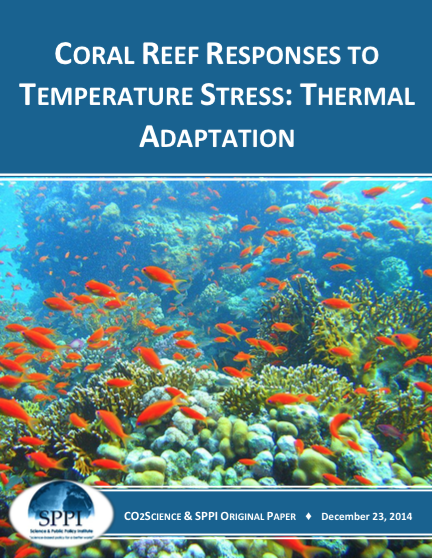
Coral Reef Responses to Temperature Stress: Thermal Adaptation
Coral Reef Responses to Temperature Stress: Thermal Adaptation. As living entities, corals are not only acted upon by the various elements of their environment,they also react or respond to them.
Released On: 12/29/2014
Views: 6363

Forest Growth Response to CO2
Forest Growth Response to CO2. By examining various properties of tree rings, researchers can deduce how historical increases in the air's CO2 concentration have already affected tree productivity and water use efficiency.
Released On: 12/29/2014
Views: 4989

Onward Marches the Great Pause
Onward Marches the Great Pause. Since October 1996 there has been no global warming at all (Fig. 1).
Released On: 12/29/2014
Views: 4030

RESPONSE OF VARIOUS MARINE ANIMALS TO OCEAN ACIDIFICATION AND WARMING
RESPONSE OF VARIOUS MARINE ANIMALS TO OCEAN ACIDIFICATION AND WARMING.
Released On: 12/8/2014
Views: 3688

FACE EXPERIMENTS AND GRASSLAND SPECIES
FACE EXPERIMENTS AND GRASSLAND SPECIES.
Released On: 12/8/2014
Views: 4264

EFFECTS OF OCEAN ACIDIFICATION ON FISH
EFFECTS OF OCEAN ACIDIFICATION ON FISH.
Released On: 12/8/2014
Views: 4278

Response of Fish to Ocean Warming
Response of Fish to Ocean Warming. According to the IPCC, CO2-induced global warming will be net harmful to the world's marine species.
Released On: 11/21/2014
Views: 4188

Long-Term Open-Top-Chamber Study of Sour Orange Trees
Long-Term Open-Top-Chamber Study of Sour Orange Trees. Eight 30-cm-tall sour orange tree (Citrus aurantium L.) seedlings were planted directly into the ground at the Agricultural Research Service's U.S. Water Conservation Laboratory in Phoenix, A ...
Released On: 11/21/2014
Views: 4216
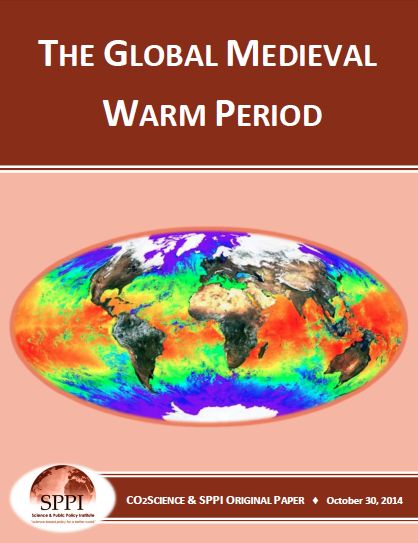
The Global Medieval Warm Period
The Global Medieval Warm Period. Between the 10th and 14th centuries AD, earth's average global temperature may have been warmer than it is today.
Released On: 11/21/2014
Views: 4031
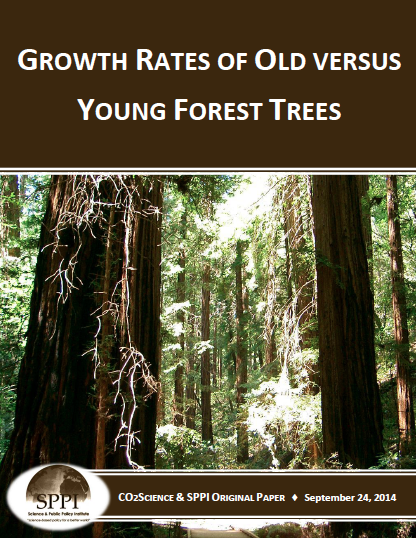
Growth Rates of Old versus Young Forest Trees
Growth Rates of Old versus Young Forest Trees. The planting and preservation of forests has long been acknowledged to be an effective and environmentally-friendly means for slowing climate-model-predicted CO2-induced global warming.
Released On: 9/30/2014
Views: 4293
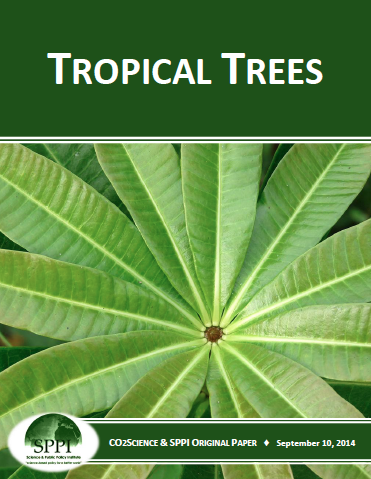
Tropical Trees
Citation: Center for the Study of Carbon Dioxide and Global Change. "Tropical Trees.”
Released On: 9/30/2014
Views: 4358
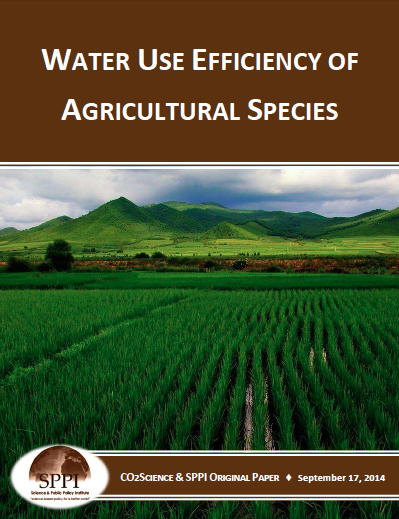
Water Use Efficiency of Agricultural Species
Water Use Efficiency of Agricultural Species.
Released On: 9/30/2014
Views: 4241
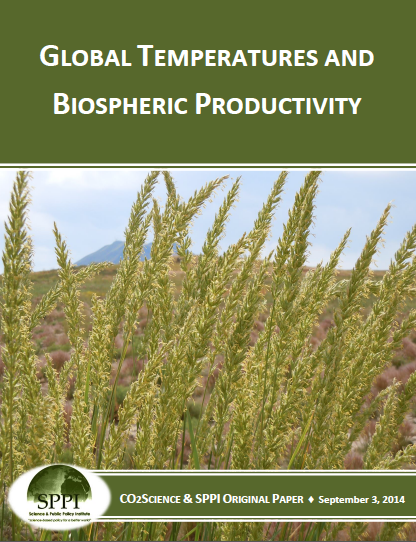
GLOBAL TEMPERATURES AND BIOSPHERIC PRODUCTIVITY
Global temperatures and biospheric productivity. Among the many climate-alarmist fears of CO2-induced global warming is the concern that the productivity of the biosphere will decline if global temperatures rise to the extent predicted by compute ...
Released On: 9/13/2014
Views: 4225
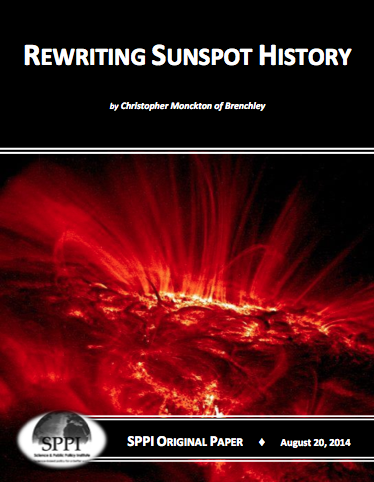
REWRITING SUNSPOT HISTORY
Rewriting sunspot history. In 2006, when I first made the mistake of writing publicly of my doubts about the Party Line on manmade global warming.
Released On: 9/13/2014
Views: 4285
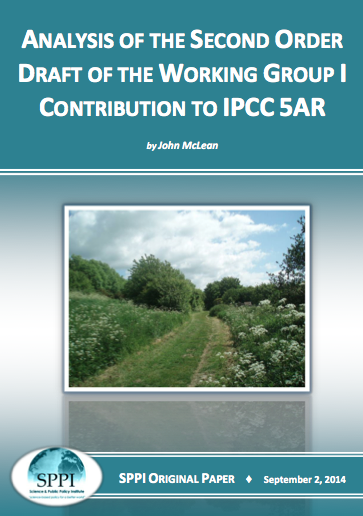
ANALYSIS OF THE SECOND ORDER DRAFT OF THE WORKING GROUP I CONTRIBUTION TO IPCC 5AR
ANALYSIS OF THE SECOND ORDER DRAFT OF THE WORKING GROUP I CONTRIBUTION TO IPCC 5AR. The preparation of IPCC Assessment Reports involves several stages.
Released On: 9/13/2014
Views: 4104
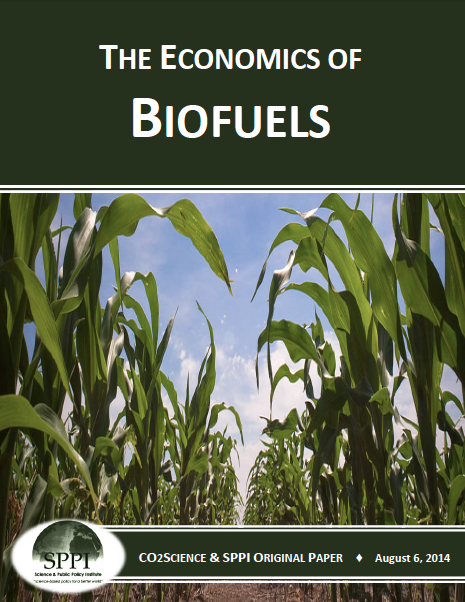
THE ECONOMICS OF BIOFUELS
The economics of biofuels. Aside from rejecting biofuel expansion and use for environmental reasons.
Released On: 9/13/2014
Views: 3946



